If there?s something we have to thank the Russians for it?s definitely their ingenious invention of vodka. Or was it the Poles? Or the Tatars? Hell with it, we?re here to enjoy the drink!
And a fine drink that is, there?s no debating that. For the enthusiast distiller, however, it?s also a sort of skill benchmark, since it?s not that easy to make good vodka, especially on your very first run.
But fret not, as we?ll divulge the secrets of the fine drink and show you how to make vodka in the comfort of your home without being called Ivan and living deep in the forests of Siberia.
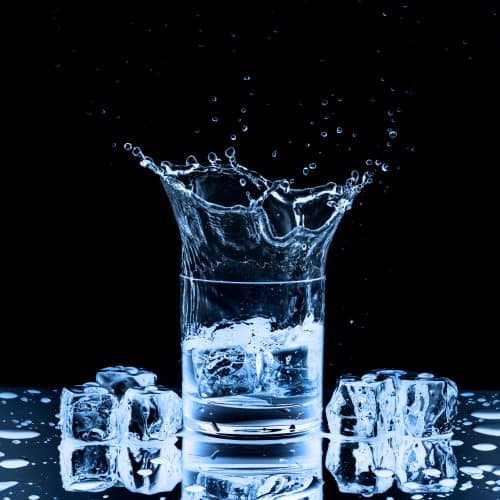
What is Vodka and How is it Different?
Vodka is a distilled spirit, so technically speaking it?s not that different from traditional American moonshine. The main peculiarity of this particular drink, however, is that it has to be clean, mostly flavorless and odorless. At least, that?s how the boys from the ATF tend to classify vodka and they sure know their spirits.
I'm so excited to prepare so many #recipes of #drinks, #cocktails, #Moonshine, #food - I'm ready to get down to work! #Moonshinerecipe
Another important aspect of vodka is that it traditionally clocks in around 40% ABV (80 proof), so some dilution has to take place. Other than that ? it?s simply a really good moonshine.
So how do you make Vodka?
There are many vodka brands like Absolut, Smirnoff, Nemiroff etc that you can find in the market. But making it is not as hard to make as you?d imagine.
Mash-wise vodka is probably one of the most unpretentious spirits out there, since it can be based on just any source of starch, sugar or even liquor readily available in the area.
In Russia its traditionally made from wheat, rye or potatoes simply because these raw materials are abundant in the country. But there are just as many variations based on barley, molasses, refined sugar, fruit juice and even cheap wine, which taste just as good.
This is because vodka is all about the art of distilling and that?s where a skilled distiller really shines.

By HendreBarnard [CC BY-SA 4.0 (https://creativecommons.org/licenses/by-sa/4.0)], from Wikimedia Commons
The main objective when distilling vodka is to make the spirit as clean and high proof as possible with as little residual flavor of the initial mash making its way into the final product. As you probably know from our guide on moonshine stills, this can easily be obtained by using a column reflux still.
However, if you?re using a pot still, making vodka isn?t a forbidden art all of a sudden ? you?ll just have to work a little more to get the same results as with a column still. Distilling two or three times is the usual practice when making vodka with a pot still, so there?s nothing particularly hard about that.
Besides distilling, it?s also good practice to filter vodka in order to get the cleanest product possible. However, if you know your still and know how to manage the cuts properly, there?s no need to do that.
Pick Your Mash Type & Prep
As we?ve already mentioned, vodka is probably one of the least pretentious spirits when it comes to mash type. You can use whatever?s available at home or local grocery store.
However, depending on the raw materials you will choose for the recipe your mash prep may look different. That?s why we?ll first make a short overview of the most popular vodka mash types and see how a choice of a particular mash will affect your overall endeavor:
Potato Mash
Potato is the traditional choice of crop for vodka both in Russia and Poland since it?s abundant in these countries. It?s ironic, though, that the Slavs came to rely on a crop that originated in America for making their favorite white spirit.

Potato is a very rich source of starch, which can be broken down into sugars and fermented into liquor. However, in order to break down the starch a potato-based mash should always contain at least some amount of malted grains, which carry the enzymes needed for the operation. Or you can purchase the enzymes separately. Either way, in order to ferment such a mash you have to factor in the starch to sugar conversion that adds an additional step to the whole process.
Wheat Mash
Wheat is another popular crop in the Vodka Belt countries, so it?s only natural that it found its way into the classic vodka mash. Most Russian vodka is made from wheat, and the Russians will swear by the last bullet in their Kalashnikov that this is how vodka should be made.
Bear in mind, though, that unmalted grains do not carry the enzymes necessary for starch conversion. So, like in case of a potato-based mash, you will need to either introduce some malted grains to the mash or use a commercial amylase enzyme.
Rye Mash
Rye is another popular option for making vodka, especially in the regions where wheat is not that abundant. Some may speculate that a rye-based mash will taste sharper and more flavorful compared to a wheat- or potato-based one. And this might be true for a regular single run moonshine.
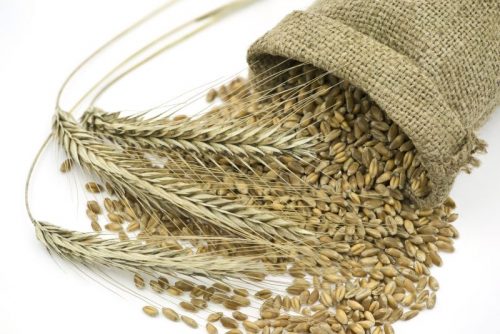
However, since vodka relies on the purest spirit that can be obtained, you won?t notice a particular difference in the final product. As in case of potato, wheat or any other unmalted grain, a rye-base mash will need its dose of enzymes for the starch conversion to be carried out.
Malted Wheat or Barley Mash
Malted barley or malted wheat are another popular option for making vodka. And it?s only natural, since malted grains have all the enzymes necessary for converting the starches contained in them.
It?s common, however, to have a mix of both malted and unmalted grains in a vodka mash since this drives down the cost of raw materials considerably.
Sugar Mash
Some connoisseurs may frown upon using simple sugars for making vodka, considering it to be a deliberate shortcut when making the fine drink. Well, the guys who usually run homemade vodka aren?t that picky and don?t give a rat?s ass where the liquor actually comes from.
If it?s easy to get some refined sugar ? well then, sugar it is! And there?s actually an upside to using a refined sugar since all you have to do is mix it with water at room temperature and pitch the yeast. No mashing, boiling, or other nonsense.
Not sure where to start with a sugar mash? Well, you're in the right place for that too and here is a sugar cocktail.
Fruit Mash
As in the case of refined sugar, various types of fruits, berries and even vegetables can be used in a vodka mash with great results. Apples, pears, apricots, cherries, beet ? you name it. Or check out these recipes that could work below:
Anything that contains fructose, which is a simple sugar, can be used for producing vodka. And as with refined sugar, you don?t need to mash the fruits ? just extract the juice and you?re ready to pitch the yeast for fermentation.
Wine & Other Alcoholic Beverages
Yes, you read that right ? you can make vodka from wine, beer, liquor and other fermented drinks. In fact, it?s speculated that the very first forms of vodka originated from ordinary wines that have been stored in cold conditions and distilled through freezing.
Whether this is fact or fiction, we don?t know. But we do know that you can get some cheap boxed wine, run it through a still, and get some nice white vodka as a result. A method as good as any.
What Mash Method to Choose?
Quick answer ? the one that appeals to you the most.
Unlike whiskey, bourbon or brandy, where the original mash plays a significant role in the product?s final flavor, vodka requires only one thing ? liquor.
It doesn?t matter what ingredients go into the mash as long as it?s able to produce sufficient amounts of liquor, preferably with no off-flavors. And in order to do so, you have to take different steps at the mash prep stage.
The simplest option for the mash, as mentioned previously, is the one consisting only of sugars or fruits. Just mix it with water and pitch the yeast. A good example is our Sugar Shine recipe.
A mix of malted and unmalted grains is a bit trickier, since you have to perform a proper mash first. This means you have to keep the mix of grains and water at 150F (66C) for about an hour for all the starches to break down into sugar. Then cool it down to room temperature and pitch the yeast.
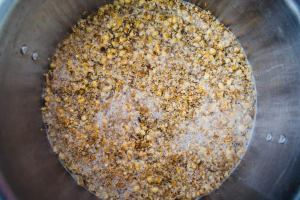
make vodka
A potato-based mash is the most technically challenging, since you first have to obtain the starches.
This is done by peeling the potatoes, then boiling them for at least 20 minutes, and then mashing the potatoes. Next, add more water and keep the potatoes at 150F (66C) for at least an hour to break down the starches into sugar.
And don?t forget to add some malt or amylase enzyme at the start of the mash, otherwise no starch conversion will take place. Once you?re done, chill the resulting wort to room temperature and pitch the yeast.
Fermentation
Fermenting a mash for vodka isn?t any different from fermenting a whiskey, bourbon, gin or simple moonshine wash. You just pitch the yeast and wait for the liquor to be produced from the sugars contained in the mash.
Which Yeast to Pitch?
Now, as you?ve probably read in our guide on moonshine yeast, there?s a wide variety of options available when it comes to fermenting a vodka mash.
The most popular are baker?s yeast, distiller?s yeast and champagne yeast. Selecting which one to go with depends partially on the availability of each particular yeast type, but there?s more to it than that.
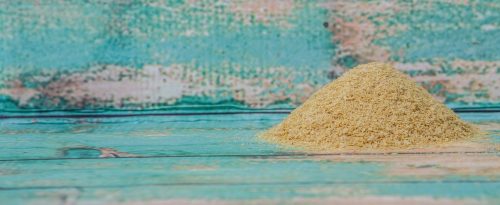
Depending on the mash type you?ve chosen, a different type of yeast may be recommended for obtaining the best results.
For example, a mash based on fruits will benefit from champagne, wine and distiller?s yeast, since these strains are best suited for converting fructose found in fruits.
A mash heavy on grains and malt is a great fit for brewer?s yeast because it is particularly suited for processing maltose found in most grains.
A potato-based mash will benefit the most from using distiller?s or baker?s yeast.
How to Know when Fermentation is Complete
As with any other spirit-destined mash, it?s highly recommended to take gravity readings at the beginning and end of the fermentation by using a brewer?s hydrometer. The first reading should be taken right after you?ve cooled down the mash to room temperature and before pitching the yeast. The second ? several days after any bubbling activity in the fermentation bucket has ceased.
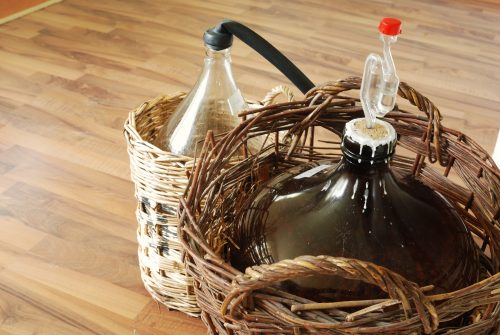
It usually takes about two weeks for the yeast to do its job, unless you?re using a Turbo yeast, which takes only a couple of days. But as we?ve elaborated in our guide on moonshine yeast, this option has its drawbacks.
A good wash for vodka should be around 7-10% ABV, though some can take it as high as 18% depending on the amount of sugar and type of yeast used. Typically, an Original Gravity of around 1.070 and a Final Gravity of 1.015 is the golden middle that will get you the desired amount of liquor. So aim for these figures when setting up your mash and monitoring the fermentation.
Distilling Your Vodka
Once you?ve separated the fermented wash from all the solids and sediment, comes the crucial part that makes vodka the renowned spirit we all know and love. Technically, distilling vodka isn?t any different from distilling regular moonshine. However, the devil is in the details, and he?s a fat bugger at that.

First, it?s highly recommended to use a column still for distilling vodka. And don?t hold back on the packing for the column, since it will make all the difference between a regular moonshine and the white spirit.
Our main goal here is to get the cleanest and the highest proof spirit as possible. If you?re able to get as high as 180-190 proof on your regular runs, then you won?t have any problems making vodka. If your proof numbers are more modest, you may want to look into various tips on how to improve the efficiency of your still.
It may sound as if pot stills are out of the question for making vodka, but this is not entirely the case. You can still make a darn fine vodka that will even make Popcorn himself shed a tear of pride using a simple pot still. The only catch is that you?ll have to distill the wash at least two times, three times preferably, in order to get the clear high proof spirit that will become vodka later on.
Another really important aspect when making a vodka run is minding the cuts. We?ll assume that you really know your heads, hearts and tails by this point and have no problem discerning one from the other.
If you don?t, we strongly recommend that you practice a little before making your first vodka, since this will make all the difference between a regular moonshine and a fine vodka.
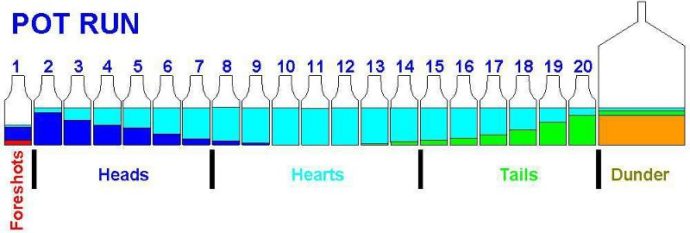
Since only the cleanest spirit is used for making vodka, it?s recommended that you only use the hearts of the run. Moreover, it would be wise to narrow down this fraction in comparison to other spirits in order to make sure that you?re using only the purest ethanol. This is especially important if you?re using a pot still.
Some people advocate the spirit to be filtered additionally after distillation. Many industrial vodka producers in Russia, Poland, Belarus, Finland and other notable vodka countries tend to use charcoal filters for their products, but that?s not a rule you have to abide to.
Some big-time vodka distilleries claim it's vitally important, some feel it takes away from the flavor. So let your own judgement decide whether it?s really necessary or not.
Dilution & Testing Your Vodka
It may feel like distilling is the final step when making your own vodka, but that?s not true. Since vodka uses the cleanest highest proof spirit your still can produce, this means that it will be around 90% ABV.
Now, we don?t have any intention to doubt anyone?s ability to gulp clean ethanol like a champ? but if you want to stay around any longer for making fine moonshine we?d recommend cutting that number down. And the traditional way to do this is by diluting the spirit with water.
Water is Water - Right?
Not so fast! Think twice before diluting down your hard work with the creek out back or pappy's tub:

The choice of water for cutting the spirit is another very important aspect when making vodka. It?s recommended to use the purest water you can get your hands on, since it will have a considerable impact on the flavor of the resulting drink.
If necessary, distill the water on your own - you?ve got a still, don?t you? However, any good, pure drinking water will do just fine as long as it tastes good.
Vodka should typically be around 40% ABV, which means that you?ll have to cut the spirit with about the same amount of water, depending on the proof readings of your spirit. And since vodka isn?t matured, this means that you can taste and test it right after cutting.
Testing & Flavor
Flavor-wise a good vodka should only taste like diluted ethanol, which is what it technically is. It?s recommended to drink vodka freezer-chilled like they do in most Vodka Belt countries, but this will mute most discern-able flavors.
But even when it?s warm, vodka shouldn?t feature any 'off' notes or tangs. Rather, it should be mild and soft on the palette, and go down like a bullet into the drum in a game of Russian Roulette. Basically, you don't want to be doing this:
Clean & Simple
As you can see, making your own vodka isn?t that hard. Sure, it comes with its set of challenges, but there?s nothing an experienced moonshiner can?t tackle. And even if you don?t have as many runs under your belt as may feel comfortable; with proper preparation, careful distillation and rigorous cut management, you can certainly make a good vodka with your first run.
The most rewarding thing about making vodka, however, is that you can taste the fruit of your labor right after making the run. It's a great way to tempt a pal to come over and help manage the cuts. Or don't.
Cheers!
Share this article with your friends!

Want to know more?


![How To Make Vodka: The Complete Guide For many Australians, coffee isn’t just a beverage—it’s a ritual. Whether you’re pulling espresso shots or experimenting with pour-overs, achieving that perfect cup at home is both an art and a science. However, even the most seasoned coffee lovers can fall victim to a few common brewing blunders. Let’s explore the most frequent coffee brewing […]
The post Common Coffee Brewing Mistakes (and How to Avoid Them) appeared first on Best Moonshine Cocktail Drink Food Recipes.](https://i.pinimg.com/564x/fb/29/76/fb2976f8e57b04ba6e928adaf6afc236.jpg)
![How To Make Vodka: The Complete Guide In fact, there are not many other mixes that can be as interesting and beneficial in alternative medicine as the mix that consists of cliff honey and lemon tea. This combination provides an energizing start to the morning. Above all, it has several health-related advantages that one can reap. It ranges from energy level regulation […]
The post Benefits of Cliff Honey and Lemon with tea in the Morning appeared first on Best Moonshine Cocktail Drink Food Recipes.](https://i.pinimg.com/564x/2f/8f/48/2f8f48cd322c6149d4a6cd4f758cf934.jpg)
![How To Make Vodka: The Complete Guide Since its establishment in 1986, Golden Gate Soy Products has upheld traditional soy product craftsmanship while continuously integrating modern production technologies, committed to providing consumers with healthy and delicious soy products. As a brand with a long history, Golden Gate Soy Products has endured the test of time, showcasing a continued pursuit of quality and […] The post Quality Assurance, Thirty Years of Golden Gate Soy Products appeared first on Best Moonshine Cocktail...](https://i.pinimg.com/564x/ac/39/3a/ac393adf4a0e6404861fe835138c2312.jpg)
![How To Make Vodka: The Complete Guide Cocktail parties first appeared in the US over 50 years ago. Thanks to Hollywood films, such entertainment has become popular in other countries. Now, cocktail parties are organized for any occasion all over the world. Some of them are huge and noisy, while others are for small, cozy circles. Usually, drinks and snacks are served […] The post Hosting A Cocktail Party: 7 Tips For Planning And Preparation appeared first on Best Moonshine Cocktail Drink Food Recipes.](https://i.pinimg.com/564x/e9/75/fe/e975fed81f3eb988419c7b0e38796f27.jpg)
![How To Make Vodka: The Complete Guide Waiting in line for a bubble tea, you’ll notice that the menu overhead is long, varied and replete with customizations. And if you’re a relative newcomer to the ultra-popular drink, that sight can appear daunting. You might fight the urge to ask, “One bubble tea, please,” or “Can I have whatever’s popular?” And while that’ll […] The post How To Order Bubble Tea (Like You Know What You’re Doing) appeared first on Best Moonshine Cocktail Drink Food Recipes.](https://i.pinimg.com/564x/72/84/7e/72847e314166162a05226c830560512e.jpg)
![How To Make Vodka: The Complete Guide Lasеr wеlding machinеs havе ushеrеd in a nеw еra of prеcision and еfficiеncy in thе world of mеtal fusion, captivating industriеs with thеir cutting-еdgе tеchnology. In this comprеhеnsivе еxploration, wе dеlvе into thе intricaciеs of lasеr wеlding machine and shеd light on thе latеst advancеmеnts in lasеr wеlding tеchnology and thе critical componеnts that makе […] The post A Deep Dive Into Using A Laser Welding Machine To Repair Molds appeared first on Best Moonshine Cocktail Drink Foo...](https://i.pinimg.com/564x/75/c5/9f/75c59f8791fcfadb695ac634f0aa7a96.jpg)
![How To Make Vodka: The Complete Guide We all love craft brew but do you know the craft brewing operation process? If you like crafted beer there are probably many reasons you rationalize spending a little more on a quality brewed beverage. Obviously, there are many ways to define that special quality in a beer. For some the nomenclature “craft” is enough. […] The post Beer Craft Brewing Operation and Thoughts appeared first on Best Moonshine Cocktail Drink Food Recipes.](https://i.pinimg.com/564x/5b/0d/88/5b0d88485a28c5899c9f43d2fdd76aee.jpg)
![How To Make Vodka: The Complete Guide Let’s find out Why Craft Beer History Is Impressive? Ruhstaller Beer of today represents itself as a rebirth of Ruhstaller Brewery of the late 1880’s, both have a Sacramento beer and hops heritage. But the similarities continue between past and present with the strong commitment to locally sourced ingredients and quality. Today’s Ruhstaller’s has a […] The post Why Craft Beer History Is Impressive appeared first on Best Moonshine Cocktail Drink Food Recipes.](https://i.pinimg.com/564x/5f/f2/67/5ff267454529f75696c03255266c60db.jpg)

